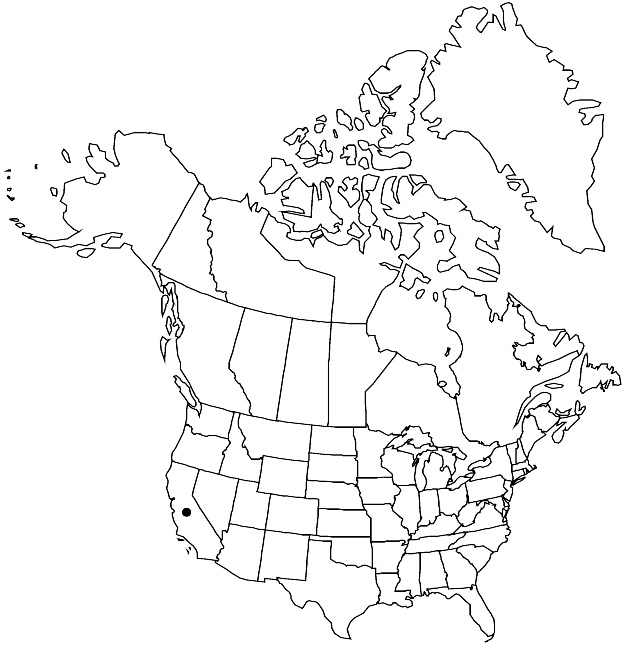Streptanthus hispidus
Proc. Calif. Acad. Sci. 3: 101. 1864.
Annuals; densely hirsute-hispid throughout, (trichomes to 1.4 mm). Stems unbranched or branched basally, 0.3–3 dm. Basal leaves not rosulate; shortly petiolate; blade obovate, 1–5 cm, margins coarsely to shallowly dentate. Cauline leaves: blade obovate to oblong, 0.7–6 cm × 2–25 mm, base cuneate or truncate, not auriculate or (distally) minutely ariculate, margins coarsely dentate. Racemes ebracteate, (not secund, with a terminal cluster of sterile flowers). Fruiting pedicels divaricate-ascending, (straight), 2–5 mm. Flowers: calyx subcampanulate; sepals pale green to purplish, ovate, 4–6 mm, not keeled; petals light purple (with white margins), 6–9 mm, blade 2–3 × 1–1.5 mm, margins crisped, claw 5–6 mm, wider than blade; stamens in 3 unequal pairs; filaments: abaxial pair (connate ca. 1/2 their length), 4–5 mm, lateral pair 3–4 mm, adaxial pair (exserted, connate to near apex), 5–6 mm; anthers: abaxial and adaxial pairs fertile, 1.5–1.8mm, adaxial pair sterile, 0.3–0.5 mm; gynophore 0.1–0.3 mm. Fruits divaricate-ascending to suberect, straight, flattened, 4–8.5 cm × 2–2.5 mm; valves each with prominent midvein; replum straight; ovules 34–66 per ovary; style 0.4–1 mm; stigma slightly 2-lobed. Seeds ovoid to suborbicular, 1.6–2 × 1.2–1.8 mm; wing 0.2–0.35 mm wide, continuous. 2n = 28.
Phenology: Flowering Mar–Jun.
Habitat: Talus or rocky outcrops (Franciscan formation, largely on chert) and sparsely vegetated openings in grassland or chaparral
Elevation: 600-1200 m
Discussion
Of conservation concern.
Streptanthus hispidus is known from Mt. Diablo in Contra Costa County.
Selected References
None.
